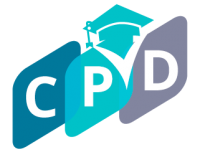Introduction:
In the pursuit of academic excellence, studying for conceptual understanding stands as a transformative approach that transcends mere rote memorization. While memorization has its place, developing a deep and nuanced comprehension of concepts fosters critical thinking, problem-solving skills, and long-term retention. This article delves into strategies that go beyond rote memorization, encouraging students to engage with their studies for a more meaningful and enduring understanding of the material.
- Embracing the Why and How: Conceptual understanding involves going beyond the surface-level knowledge of what a concept is and delving into why and how it works. Instead of memorizing formulas or facts, ask yourself why they exist and how they relate to broader principles. Understanding the underlying mechanisms and reasons behind concepts provides a solid foundation for application and problem-solving.
- Relating New Information to Prior Knowledge: Connect new information to what you already know. This process of linking concepts establishes a cognitive framework that facilitates understanding. Analogies, metaphors, and real-world examples are powerful tools for creating these connections. By relating new information to familiar concepts, you build a cohesive mental network that supports a deeper understanding.
- Engaging in Active Learning: Active learning methods involve dynamic participation rather than passive reception. Rather than simply reading or listening, engage with the material actively. This can include discussions, problem-solving exercises, experiments, or teaching the concepts to someone else. Active learning encourages a hands-on approach that reinforces understanding and retention.
- Utilizing Concept Maps and Mind Mapping: Concept maps and mind mapping are visual tools that help organize and represent relationships between concepts. Creating these visual representations encourages a holistic view of the subject matter. As you map out connections between ideas, you reinforce the relationships, making it easier to understand the broader structure of the material.
- Asking Thoughtful Questions: Develop a habit of asking thoughtful questions about the material. Challenge yourself to explore the implications of concepts, consider alternative perspectives, and inquire about the practical applications of what you are learning. Thoughtful questioning stimulates critical thinking and encourages a more profound engagement with the material.
- Problem-Solving Exercises and Application: Apply theoretical knowledge to practical problem-solving exercises. This approach shifts the focus from memorizing facts to understanding how to use information in real-world scenarios. Whether it’s solving mathematical problems, conducting experiments, or analyzing case studies, practical application reinforces conceptual understanding and enhances retention.
- Seeking Diverse Perspectives: Explore diverse perspectives on a given concept. Different authors, scholars, or experts may present varying viewpoints. Exposure to diverse perspectives not only enriches your understanding but also encourages a more comprehensive and critical evaluation of the subject matter.
- Participating in Group Discussions: Engage in group discussions to exchange ideas and viewpoints with peers. Explaining concepts to others and listening to their interpretations fosters a collaborative learning environment. The exchange of perspectives stimulates critical thinking, challenges assumptions, and deepens conceptual understanding.
- Reflective Journaling: Maintain a reflective journal to capture your thoughts, questions, and insights as you study. Regularly reviewing your journal allows you to track your evolving understanding of concepts over time. The act of articulating your thoughts in writing contributes to the process of internalizing and comprehending the material.
- Connecting Across Disciplines: Explore connections between concepts across different disciplines. Many ideas are interdisciplinary, and understanding how concepts in one field relate to those in another can provide a holistic perspective. This interdisciplinary approach broadens your understanding and encourages a more interconnected view of knowledge.
- Simulations and Interactive Learning: Leverage simulations and interactive learning tools that allow you to experiment with concepts in a virtual environment. Simulations provide a hands-on experience, enabling you to observe cause-and-effect relationships and understand the practical implications of theoretical concepts.
- Encouraging Curiosity and Exploration: Cultivate a sense of curiosity about the subject matter. Explore beyond the prescribed curriculum, delve into related topics, and follow your interests within the broader field. Curiosity drives a genuine interest in understanding, motivating you to explore concepts more deeply.
- Soliciting Feedback and Iterative Learning: Seek feedback on your understanding from peers, instructors, or mentors. Constructive feedback helps identify areas for improvement and guides you in refining your conceptual understanding. Embrace an iterative learning process, where each round of feedback informs your ongoing exploration and comprehension of the material.
- Focusing on Application in Real-Life Scenarios: Consider how concepts apply to real-life scenarios. Connecting theoretical knowledge to practical applications enhances your appreciation for the relevance and significance of what you are learning. Understanding the real-world implications of concepts reinforces their meaning and promotes a more profound understanding.
- Emphasizing Depth Over Breadth: Prioritize depth of understanding over the breadth of coverage. Instead of skimming the surface of numerous concepts, dedicate time to thoroughly explore and master a select few. A deeper understanding of a limited number of concepts provides a more solid foundation for continued learning and application.
Conclusion:
Studying for conceptual understanding transcends the limitations of rote memorization, unlocking a world of critical thinking, problem-solving, and lifelong learning. By embracing active learning methods, connecting concepts to real-world scenarios, and fostering curiosity, students can move beyond the superficial acquisition of knowledge to a profound comprehension that endures over time. The journey toward conceptual understanding is a dynamic and rewarding process that not only enriches academic pursuits but also lays the groundwork for a lifelong passion for learning.
